Sinclair May

May Sinclair was the pseudonym of Mary Amelia St. Clair (1863 - 1946), a popular British writer who wrote about two dozen novels, short stories and poetry. She was an active suffragist, and member of the Woman Writers' Suffrage League. She was also a significant critic, in the area of modernist poetry and prose; the literary term 'stream of consciousness' is attributed to her. She was born in Rock Ferry, Cheshire. Her father was a Liverpool shipowner, who went bankrupt, became an alcoholic, and died before she was an adult. Her mother was strict and religious; the family moved to Ilford on the edge of London. After one year of education at Cheltenham Ladies College, she acted as carer for her brothers (four of five, all older and all suffering from a fatal congenital heart disease). From 1896 she wrote professionally, to support herself and her mother, who died in 1901. She treated a number of themes relating to the position of women, and marriage. She also wrote non-fiction based on studies of philosophy, particularly German idealism. Her works sold well in the United States. Around 1913, at the Medico-Psychological Clinic in London, she became interested in psychoanalytic thought, and introduced matter related to Sigmund Freud's teaching in her novels. In 1914 she volunteered for ambulance duty in Belgium, at the start of World War I. She was able to endure only a few weeks at the front; she wrote about the experience in both prose and poetry. She wrote early criticism on Imagism and the poet H. D. (1915 in The Egoist); she was on social terms with H. D. (Hilda Doolittle), Richard Aldington and Ezra Pound at the time. She also reviewed in a positive light the poetry of T. S. Eliot (1917 in the Little Review) and the fiction of Dorothy Richardson (1918 in The Egoist). It was in connection with Richardson that she introduced 'stream of consciousness' as a literary term, which was very generally adopted. Some aspects of Sinclair's subsequent novels have been traced as influenced by modernist techniques, particularly in the autobiographical Mary Olivier: A Life (1919). She was included in the 1925 Contact Collection of Contemporary Writers. She was a member of the Society for Psychical Research from 1914. Some supernatural fiction devices appear in her shorter fiction. From the late 1920s she was suffering from the early signs of Parkinson's disease, and ceased writing. She settled with a companion in Buckinghamshire in 1932.
do you like this author?
What readers are saying
What do you think? Write your own comment on this book!
write a commentWhat readers are saying
What do you think? Write your own comment on this author!
write a commentBook list
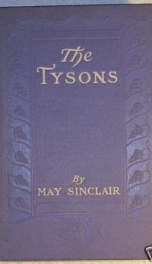
The Tysons
Series:
Unknown
Year:
Unknown
Raiting:
4/5
A great story about women & marriage.
Show more
add to favoritesadd In favorites
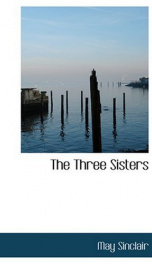
The Three Sisters
Series:
Unknown
Year:
Unknown
Raiting:
5/5
This book was converted from its physical edition to the digital format by a community of volunteers. You may find it for free on the web. Purchase of the Kindle edition includes wireless delivery.
Show more
add to favoritesadd In favorites
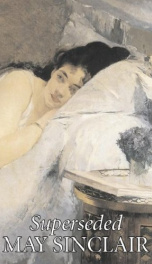
Superseded
Series:
Unknown
Year:
Unknown
Raiting:
2.5/5
Author, poet, critic, and suffragist Mary Amelia St. Clair was a contemporary of and acquainted with Henry James, Thomas Hardy, Ford Madox Ford, T.S. Eliot, Ezra Pound, and Rebecca West, among others. She served as an ambulance driver in World War I, and produced poetry and fiction based on it. Superseded takes place in a girl's school whose headmistress, Miss Cursiter, is a formidable and not entirely likeable woman with "an intelligence fervent with the fire of the enthusiast, cold with the renunciate's frost." Miss Cursiter wishes to improve education, and advocates her students spend their evenings studying great literature, but charts a course not all of her charges are fit to follow. As a character puts it, "Your precious system . . . sets up the same absurd standard for every woman, the brilliant genius and the average imbecile," with results that lead to tragedy. The New York Sun said of Superseded, "Makes one wonder if in future years the quiet little English woman might be recognized as a new Jane Austen."
Show more
add to favoritesadd In favorites

The Romantic
Series:
Unknown
Year:
Unknown
Raiting:
4.5/5
This book was converted from its physical edition to the digital format by a community of volunteers. You may find it for free on the web. Purchase of the Kindle edition includes wireless delivery.
Show more
add to favoritesadd In favorites

Mr. Waddington of Wyck
Series:
Unknown
Year:
Unknown
Raiting:
3/5
Mr. Waddington of Wyck. please visit www.valdebooks.com for a full list of titles
Show more
add to favoritesadd In favorites

Mary Olivier: a Life
Series:
Unknown
Year:
Unknown
Raiting:
3.5/5
Autobiographical novel, published in 1919, of Mary Amelia St. Clair, a popular British writer who wrote under a pseudonym May Sinclair. The book tells of a young Victorian girl who is struggling with life's questions, of an intimate, painful account of the ties between daughter and mother. The author offers a pitiless, ironical analysis of Victorian family.
Show more
add to favoritesadd In favorites
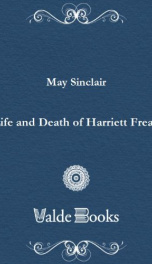
Life and Death of Harriett Frean
Series:
Unknown
Year:
Unknown
Raiting:
3.5/5
?A little masterpiece.? ?New Statesman -- Review
Show more
add to favoritesadd In favorites
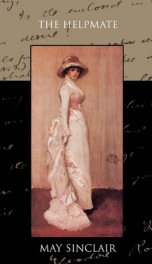
The Helpmate
Series:
Unknown
Year:
Unknown
Raiting:
3.5/5
May Sinclair was the pseudonym of Mary Amelia St. Clair (1863 - 1946). Sinclair was a British writer who wrote short stories, novels and poems. As a literary critic she coined the term "stream of consciousness". She wrote nonfiction based on studies of philosophy and German idealism. Some of her works include he Romantic (1920), Mr. Waddington of Wyck (1921), Anne Severn and the Fieldings (1922) and Life and Death of Harriett Frean (1922). The theme in The Helpmate is that a narrow minded "good" woman though well intentioned can be the moral downfall of a man. Anne married Walter believing he is good. Walter has had an on going affair with Lady Cagley and Walter's sister threatens to tell Anne. The sister does not tell Anne, but Anne overhears gossip on her honeymoon about the affair.
Show more
add to favoritesadd In favorites
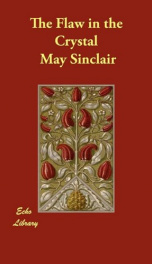
The Flaw in the Crystal
Series:
Unknown
Year:
Unknown
Raiting:
3.5/5
May Sinclair was the pseudonym of Mary Amelia Saint Clair, a popular writer of short stories and member of the Women Writers' Suffrage League.
Show more
add to favoritesadd In favorites

The Divine Fire
Series:
Unknown
Year:
Unknown
Raiting:
3.5/5
Originally published in 1921. This volume from the Cornell University Library's print collections was scanned on an APT BookScan and converted to JPG 2000 format by Kirtas Technologies. All titles scanned cover to cover and pages may include marks, notations and other marginalia present in the original volume.
Show more
add to favoritesadd In favorites

The Creators
Series:
Unknown
Year:
Unknown
Raiting:
3/5
May Sinclair was the pseudonym of Mary Amelia St. Clair (1862-1946), a popular British writer. She was known for two dozen novels, short stories and poetry. She was an active suffragist, and member of the Woman Writers’ Suffrage League. She was also a significant critic, in the area of modernist poetry and prose; the term stream of consciousness, in its literary sense, is attributed to her. From 1896 she wrote professionally, to support herself and her mother, who died in 1901. She treated a number of themes relating to the position of women, and marriage. She also wrote nonfiction based on studies of philosophy, particularly German idealism. Her works sold well in the United States. Among her most famous works are: The Divine Fire (1904), Superseded (1906), The Helpmate (1907), The Judgment of Eve (1907), The Belfry (1916), The Romantic (1920), Mr. Waddington of Wyck (1921), Anne Severn and the Fieldings (1922) and Life and Death of Harriett Frean (1922). --This text refers to an alternate Paperback edition.
Show more
add to favoritesadd In favorites

The Combined Maze
Series:
Unknown
Year:
Unknown
Raiting:
5/5
THE COMBINED MAZE YOU may say that there was something wrong somewhere, some mistake, from the very beginning, in his parentage, in the time and place and manner of his birth. It was in the early eighties, over a shabby chemists shop in Wandsworth High Street, and it came of the union of Fulleymore Ransome, a little middle-aged chemist, weedy, parched, furtively inebriate, and his wife Emma, the daughter of John Randall, a draper. They called him John Randall Fulleymore Ransome, and Ranny for short. Ranny shouldhavebeen born in landsof adventure,under the green light of a virgin forest, or on some illimitable prairie he should have sailed with the Vikings or fought with Cromwells Ironsides or, better still, he should have run, half naked, splendidly pagan, bearing the torch of Marathon. And yet he bore his torch. From the very first his mother said that Ranny was that venturesome. He showed it in his ill-considered and ungovernable determination to be born, and it was hard to say which of them, Ranny or his mother, more nearly died of it. She must have been aware that there was a hitch somewhere for, referring again and again, as she did, to Rannys venturesomeness, she would say, It beats me where he gets it from. He may have got some of it from her, for she, poor thing, had sunk, adventurously, in one disastrous marriage, her whole stock of youth and gaiety and charm. It was Rannys youth and charm and gaiety that made him so surprising and so unaccountable. Circumstances were not encouraging to Rannys youth nor to his private and particular ambition, the cultivation of a superb physique. For not only was he a little chemists son, he was a great furniture dealers inexpensive and utterly insignificant clerk, one of a dozen confined in a long mahogany pen where they sat at long mahogany desks upon high mahogany stools, making invoices of chairs and tables and wardrobes and washstands and all manner of furniture. You would never have known, to see him sitting there, that John Randall Fulleymore Ransome was a leader in Section I of the London Polytechnic Gymnasium. So far, in his way, he testified, he bore his torch. Con- fined as he was in a mahogany pen, born and brought up in the odour of drugs, and surrounded by every ignominious sign of disease and infirmity, his dream was yet of cleanness, of health and the splendour of physical perfection. The thing that young Ransome most loathed and abhorred was Flabbiness, and next to Flabbiness, Weedi- ness. The years of his adolescence were one long struggle and battle against these two. He had them ever before him, and associated them, absurdly but inveterately, with a pharmaceutical chemists occupation of Weediness his father being the prime example while for Flabbiness, young Mercier, his fathers assistant well Mercier, as he said, took the biscuit. It was horrible for ybung Ransome to inhabit the same house with young Mercier, because of his flabbiness. In all cities there are many thousand Ransomes, more or less confined in mahogany cages, but John Randall Fulleymore stands for all of them. He was one of those who, in a cold twilight on a Saturday afternoon, stagger from the trampled field, hot-eyed under their wild hair, whose garments are stained from the torn grass and uptrodden earth, with here and there a rent and the white gleam of a shoulder or a thigh whose vivid, virile odour has a tang of earth in it. He is the image and the type of these forlorn, foredoomed young athletes, these ex- ponents of a citys desperate adolescence, these inarticulate enthusiasts of the earth... --This text refers to an alternate Paperback edition.
Show more
add to favoritesadd In favorites
What readers are saying
What do you think? Write your own comment on this author!
write a commentif you like Sinclair May try:
readers also enjoyed
What readers are saying
What do you think? Write your own comment on this author!
write a commentGenre
if you like Sinclair May try:
readers also enjoyed
Do you want to read a book that interests you? It’s EASY!
Create an account and send a request for reading to other users on the Webpage of the book!

